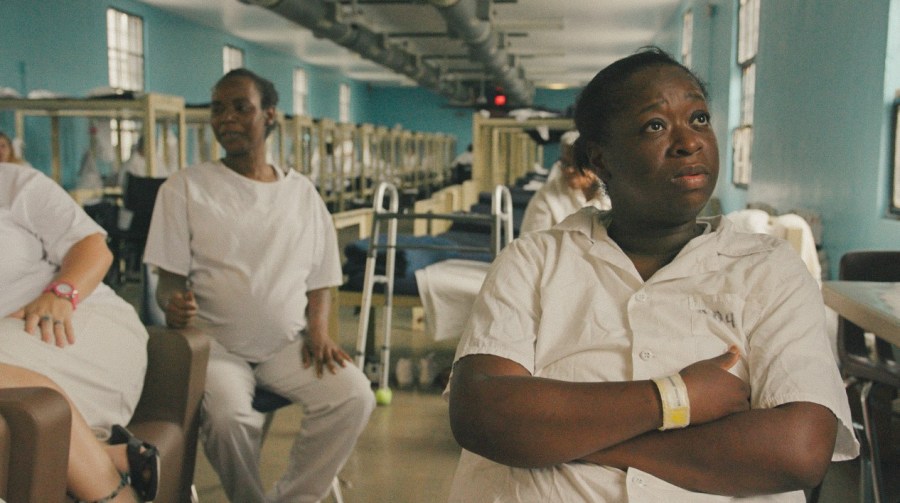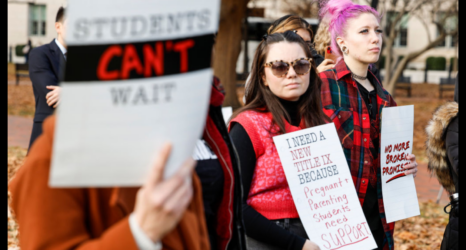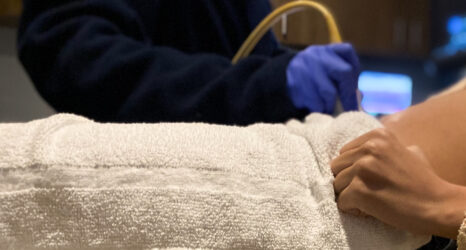
This is the second article in a three-part series on the Period Project, which examines the scope and consequences of period poverty and assesses state progress toward achieving menstrual equity through legislation.
During her time in federal prison, Topeka K. Sam experienced the pain and suffering of untreated uterine fibroids and an unsuccessful surgery that caused excessive vaginal bleeding. The prison’s commissary limited the number of menstrual products she could purchase, despite her needs to manage the bleeding. To obtain additional menstrual products, she endured the demeaning and humiliating experience of showing male guards her used pads. Meanwhile, Kimberly Haven needed a hysterectomy after suffering toxic shock syndrome from using her own “homemade” menstrual products after she was unable to secure an adequate supply while incarcerated in a Maryland prison.
As horrific as their experiences were, they provide a mere snapshot of the horrors we uncovered as part of our research study—The Period Project—on period poverty and menstrual equity in the United States. For the Period Project, Ms. magazine has teamed up with the California Women’s Law Center (CWLC) and the Center for Biotechnology and Global Health Policy (CBGHP) at the University of California, Irvine, to bring attention to the urgent matter of period poverty. In this series, we document the realities suffered and commonly experienced by women, girls, and those who menstruate while incarcerated. Despite recent attention to reproductive health, rights and justice, these issues frequently glide under the surface, unseen and unheard in the broader fight for reproductive rights.
Menstrual equity in the carceral setting is an urgent concern, because the United States has one of the highest rates of female incarceration in the world. According to data from 2018, although only 5 percent of the world’s female population lives in the United States, it accounts for nearly 30 percent of the world’s incarcerated women—four times the percentage of Russia and two times the percentage of China. Shockingly, women’s incarceration rates increased 700 percent in the United States from 1980 to 2019.
Unfortunately, state lawmakers have done little to address reproductive healthcare in the prison setting. Inadequate and inaccessible menstrual products remain a pervasive issue in the U.S. carceral system. And, frequently, incarcerated populations are given an insufficient supply of quality menstrual products and must pay for, beg, and humiliate themselves for more.
Although only 5 percent of the world’s female population lives in the United States, it accounts for nearly 30 percent of the world’s incarcerated women. Inadequate and inaccessible menstrual products remain a pervasive issue in the U.S. carceral system.
Incarcerated individuals report receiving only an allotted number of pads, regardless of their actual needs. As a result, many have no choice but to bleed through their clothes or resort to other unsanitary and dangerous measures to manage their menstrual periods. Because menstrual products in many facilities are not freely available to the incarcerated, they endure shaming when forced to request tampons or pads from guards—many of whom are male—exacerbating existing power dynamics in a humiliating or even physically dangerous manner. In 2020, for example, a federal corrections officer pled guilty to sexually abusing an incarcerated woman by exchanging menstrual products for sex.
But these problems are well known by state and federal officials. In 2014, for example, the U.S. Department of Justice (DOJ) released results from its investigation of Alabama’s Julia Tutwiler Women’s Prison, reporting that “prisoners [were] compelled to submit to unlawful sexual advances to either obtain necessities, such as feminine hygiene products and laundry services, or to avoid punishment.” Troublingly, despite the DOJ’s awareness of the issue, the problem persists.

Further, when incarcerated individuals are given an insufficient supply of menstrual products, or the tampons or pads are of such poor quality that they are unusable, incarcerated women and those who menstruate must purchase additional supplies from the prison commissary. In most prisons and jails in the United States, the costs of pads and tampons is higher than their price outside of the carceral system.
The problems are compounded: For women able to earn a wage while incarcerated, at best they may receive $3.50 per day. The price of menstrual products typically amounts to multiple days’ wages. Further, many states mandate that incarcerated women have extremely low balances in their “inmate trust funds” before qualifying to receive any help to pay for these necessities. Shockingly, even then, this help often comes in the form of a loan they must repay.
For women able to earn a wage while incarcerated, the price of menstrual products typically amounts to multiple days’ wages.
Some nonprofits donate menstrual products to mitigate the financial burdens, but this remains an inadequate solution. Women use an average of five liners or 20 tampons per cycle and three-quarters of incarcerated women are of reproductive age. This means that in 2019, nonprofits would have needed to donate more than 800,000 liners or more than 3 million tampons per month to meet the menstrual product needs of the incarcerated population.
As our research shows, few states have taken action to address the issue and enforcement lags behind laws that mandate access to menstrual supplies. In Maryland, for example, where menstrual products are supposed to be free for all inmates, the Maryland legislature found that incarcerated individuals were still paying for menstrual products.
Politically, this is not just a state issue or concern. The federal government has also failed to provide meaningful solutions to period poverty in prisons. In 2017, a DOJ memorandum ordered that “wardens will ensure inmates are provided [menstrual] products” at no cost. The memorandum, however, suffers several limitations.
- First, it applies only to federal prisons and to carceral facilities that house women—thereby excluding those in state facilities as well as transgender men and gender nonconforming people housed in men’s federal facilities.
- Second, it also states that federal prisons “should not significantly increase overall expenditures for female hygiene products beyond current levels.”
- Third, and importantly, the memo does not specify how the menstrual products must be provided in prisons, leaving prison guards with too much discretion and power to continue denying access to these essential products.
Simply put, even though federal law like the Frist Step Act requires the Federal Bureau of Prisons (BOP) to provide tampons and sanitary napkins that meet industry standards free of charge to incarcerated women, stunning gaps remain. Indeed, while access to menstrual products in women’s prisons is often inadequate, it is far worse or even nonexistent for trans and nonbinary people in men’s prisons.
Notably, in 2019 the Trump administration was sued for the harms inflicted on nondocumented children and detained women. One of the most glaring issues brought to light by the lawsuit was the lack of menstrual products provided to migrant girls. Menstruating girls were given just one sanitary pad per day and were not offered showers or a change of clothes, even if they bled through their clothing.
Most importantly, solutions are within reach and lessons can be learned. Colorado state Representative Leslie Herod led her state legislature to enact policies that provide for menstrual equity in their carceral settings. Famously, holding up a tampon on the House Floor, she reminded colleagues that incarcerated women in Colorado were reduced to trading sex for “access to tampons.” In her speech closing, Herod urged state officials to treat incarcerated women with “the respect and dignity they deserve.” We couldn’t agree more.
The third article in the Period Project series—released Friday, Feb. 25—will feature a close examination of period poverty in American schools and what we can do to tackle this issue.
Allison M. Whelan and Michele Goodwin contributed to this report.
Up next:





